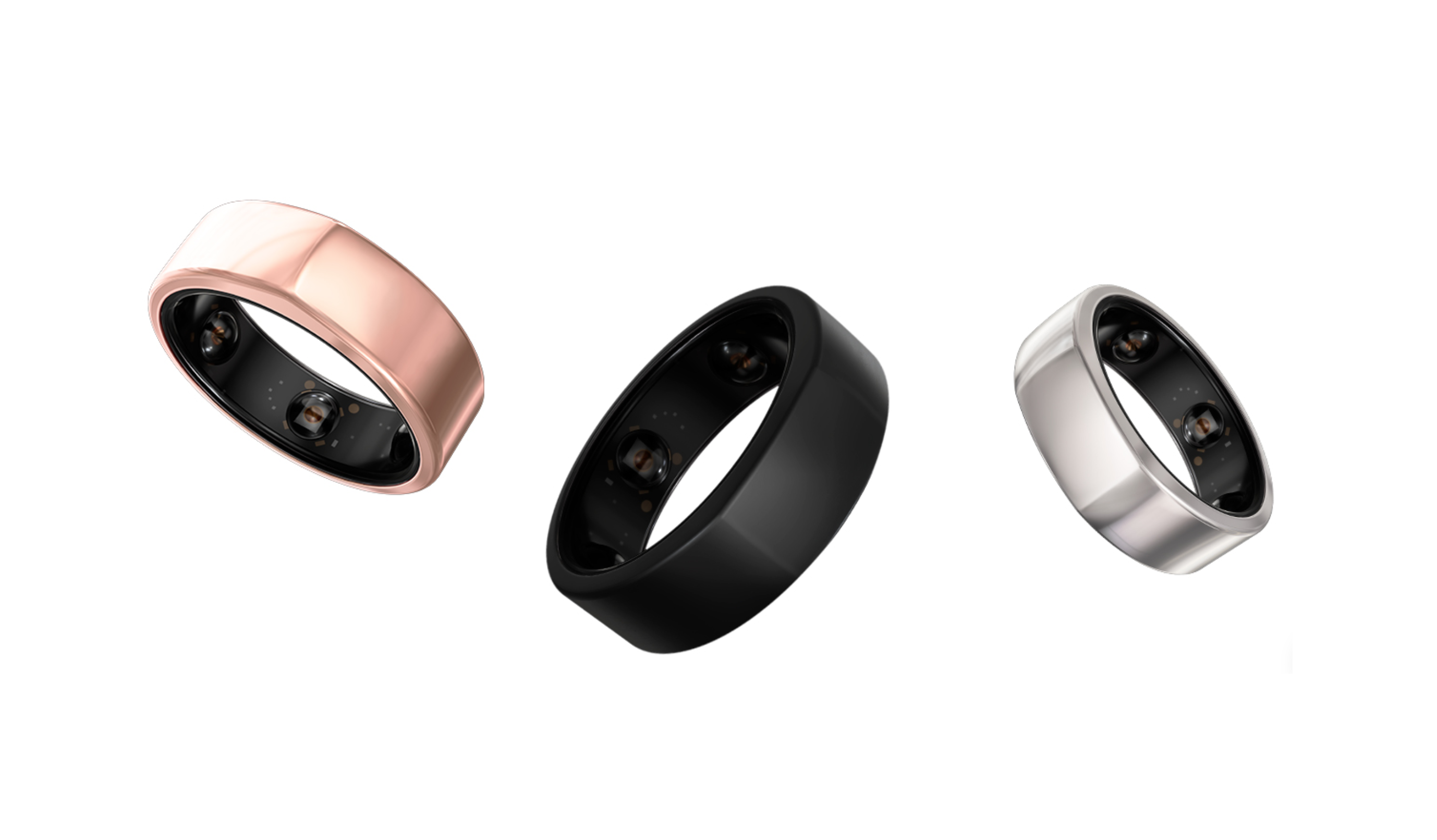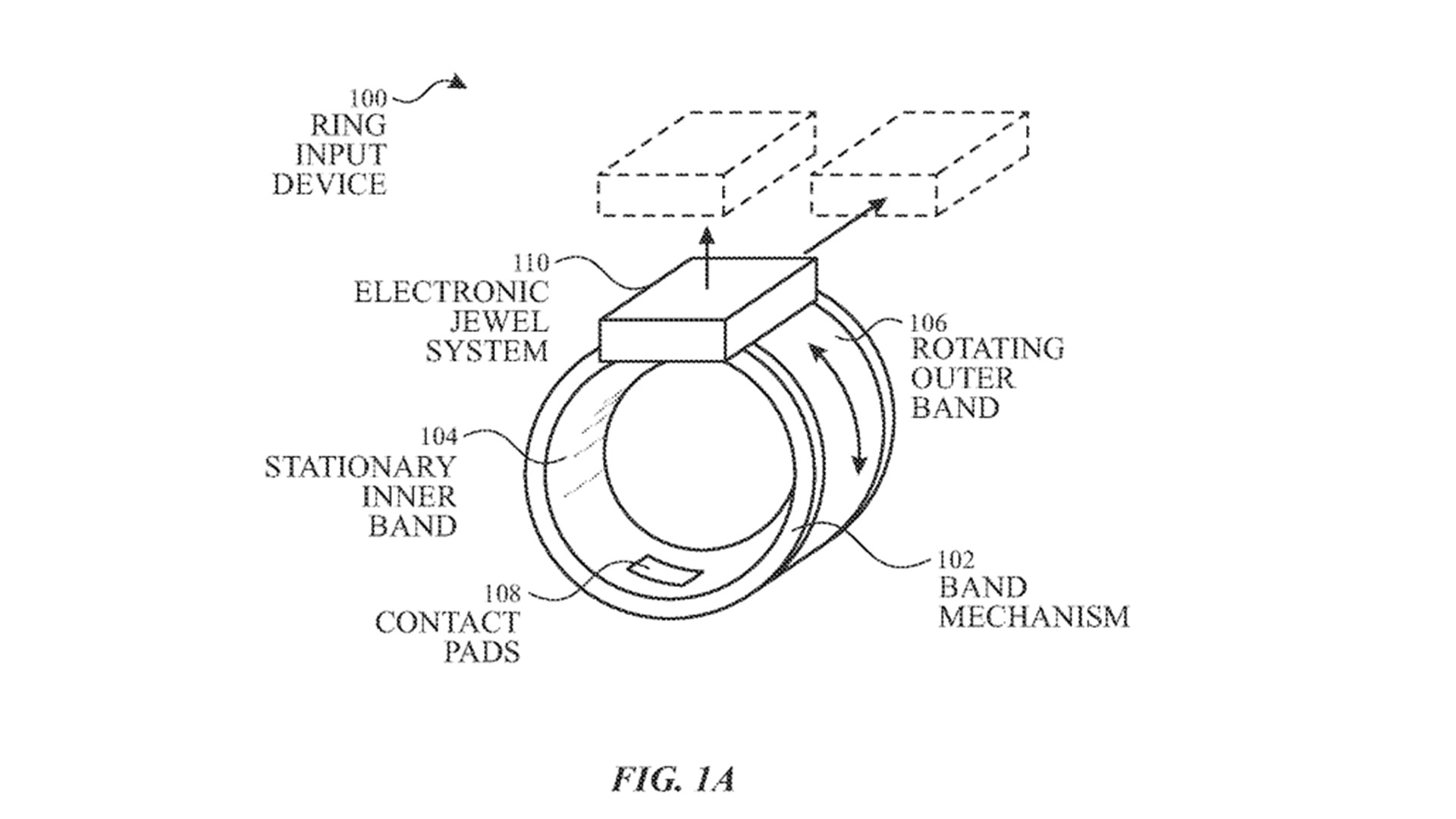Apple and Samsung are finally embracing the possibility of Oura-style smart rings
Big tech is embracing screenless, unobtrusive wearables

At the CES tech conference this year, our US editor-in-chief Lance Ulanoff was walking the floor and finding a lot of screenless smartwatches. Some of them had sensors built into analog watchbands, while another was a watch that offered smooth gemstone faces in lieu of a traditional timekeeping-style screen.
Screenless fitness trackers are nothing new - after all, that was the way Fitbit’s original wrist-based tracker, the Fitbit Flex was conceived, and Whoop 4.0 has carried this trend on until today. Other trackers recently gaining popularity include hybrid watches such as the Garmin Instinct Crossover, which minimize screens in favor of prioritizing analog hands. But the smart ring space is expanding fast, taking the idea of the ultimate unobtrusive health tracker to new heights.
The Oura Ring is leading the charge with its Oura Generation 3 model, but other competitors such as the Ultrahuman Ring Air are garnering acclaim too. The Oura Ring is currently listed as our best sleep tracker thanks to its sophisticated recovery algorithms and slender, unobtrusive profile being less of a bother to wear than a chunky watch. Some of our best running watches have great sleep-tracking algorithms, but their rugged aesthetics mean you risk whacking yourself in the face with their hefty metal cases during sleep.

I really liked the Oura Ring. I used it for over a month and loved getting all my tracking data in an extremely minimalist form factor, with the ring even notifying me when I was putting too much stress on my body and I was at risk of getting ill. I was very impressed with how much technology was packed into such a small unit.
The two factors stopping me from using it as my main tracker were activity-based: I wanted lots more GPS-driven running data than it was able to provide, and I couldn’t wear it in the gym without scratching the hell out of it with a barbell. Otherwise, I wore it during the day, during the night, in yoga classes, on light runs… pretty much constantly when I wasn't in the gym. If you’re not into lifting weights and you don’t care about running stats like cadence or ground contact time, it’s the perfect quiet health device.
Now Oura has more or less perfected the format and proved it can be successful, it’s only natural the biggest names in tech are getting into the smart ring game. Apple is continuing to work on a smart ring system and has been toying with it since 2020 when the first patent news broke. The latest tidbit reveals Apple is planning a ring with an ‘electronic jewel’ protruding crown designed to take advantage of the traditional way a ring might be structured in order to cleverly squeeze in some additional technology.

According to the recent patent, Apple is incorporating some movement controls, allowing you to remotely control your iPhone, Mac, and, perhaps one day, your Apple Vision Pro, like a tiny Nintendo Power Glove. Interestingly, we haven’t heard anything about its health tracking features yet, so it could simply be pitched as a motion control interface, if not scrapped altogether before development gets much further. However, given that almost every other smart ring is pitched as a sleep, health, and movement tracker, we expect Apple to follow suit if the ring ever makes it out of development hell.
Sign up for breaking news, reviews, opinion, top tech deals, and more.
Samsung’s upcoming Galaxy Ring, on the other hand, is likely to arrive much sooner. Recent rumors point to the Samsung Galaxy Ring being ready for a 2024 launch, with some outlets predicting it could enter production as soon as next month. The Samsung Galaxy Watch 6 and Watch 6 Classic placed a big emphasis on sleep tracking in its promotional materials, heavily emphasizing its on-watch sleep coaching and sophistical algorithms driven by heart rate variability and its skin temperature sensor. Chronotypes or ‘sleep profiles’ can analyze your sleep and give you customized recommendations. The infrastructure is there for an excellent, potentially Oura-beating sleep tracker if there can only be one ring to rule them all.
The Samsung Galaxy Ring is all but confirmed to be hitting shelves in the not-too-distant future, and Apple is clearly experimenting with the format. These are exciting times for smart ring users, who have had precious little to celebrate from major technology firms. Oura is clearly the leader of the pack consisting of Ultrahuman, the Circular Ring, and a few others. However, an Apple or Samsung version would propel the format forward into the mainstream, and it means a lot more people would start wearing some of the best smart rings.
You might also like:

Matt is TechRadar's expert on all things fitness, wellness and wearable tech.
A former staffer at Men's Health, he holds a Master's Degree in journalism from Cardiff and has written for brands like Runner's World, Women's Health, Men's Fitness, LiveScience and Fit&Well on everything fitness tech, exercise, nutrition and mental wellbeing.
Matt's a keen runner, ex-kickboxer, not averse to the odd yoga flow, and insists everyone should stretch every morning. When he’s not training or writing about health and fitness, he can be found reading doorstop-thick fantasy books with lots of fictional maps in them.